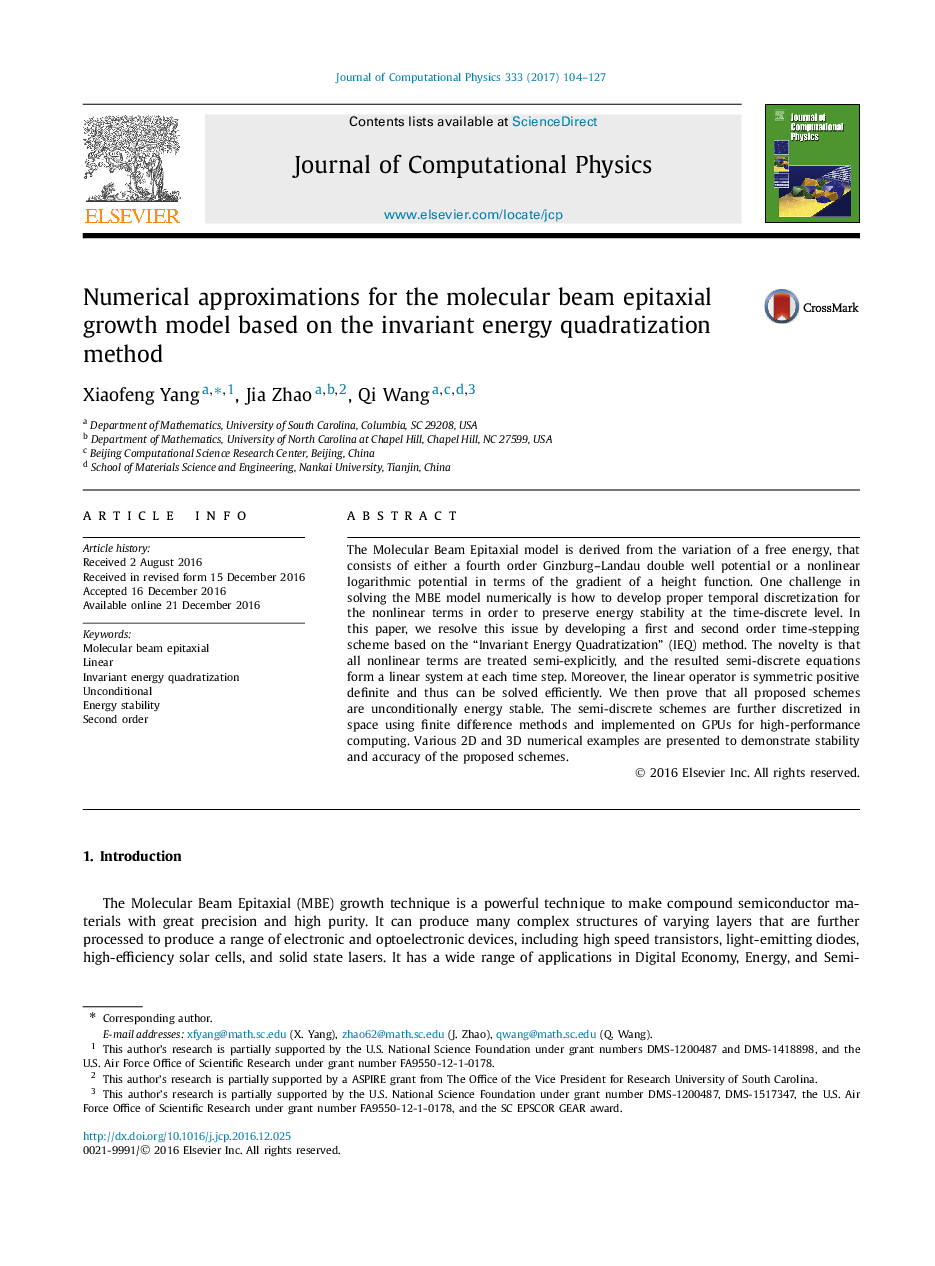| Article ID | Journal | Published Year | Pages | File Type |
|---|---|---|---|---|
| 4967689 | Journal of Computational Physics | 2017 | 24 Pages |
Abstract
The Molecular Beam Epitaxial model is derived from the variation of a free energy, that consists of either a fourth order Ginzburg-Landau double well potential or a nonlinear logarithmic potential in terms of the gradient of a height function. One challenge in solving the MBE model numerically is how to develop proper temporal discretization for the nonlinear terms in order to preserve energy stability at the time-discrete level. In this paper, we resolve this issue by developing a first and second order time-stepping scheme based on the “Invariant Energy Quadratization” (IEQ) method. The novelty is that all nonlinear terms are treated semi-explicitly, and the resulted semi-discrete equations form a linear system at each time step. Moreover, the linear operator is symmetric positive definite and thus can be solved efficiently. We then prove that all proposed schemes are unconditionally energy stable. The semi-discrete schemes are further discretized in space using finite difference methods and implemented on GPUs for high-performance computing. Various 2D and 3D numerical examples are presented to demonstrate stability and accuracy of the proposed schemes.
Related Topics
Physical Sciences and Engineering
Computer Science
Computer Science Applications
Authors
Xiaofeng Yang, Jia Zhao, Qi Wang,
